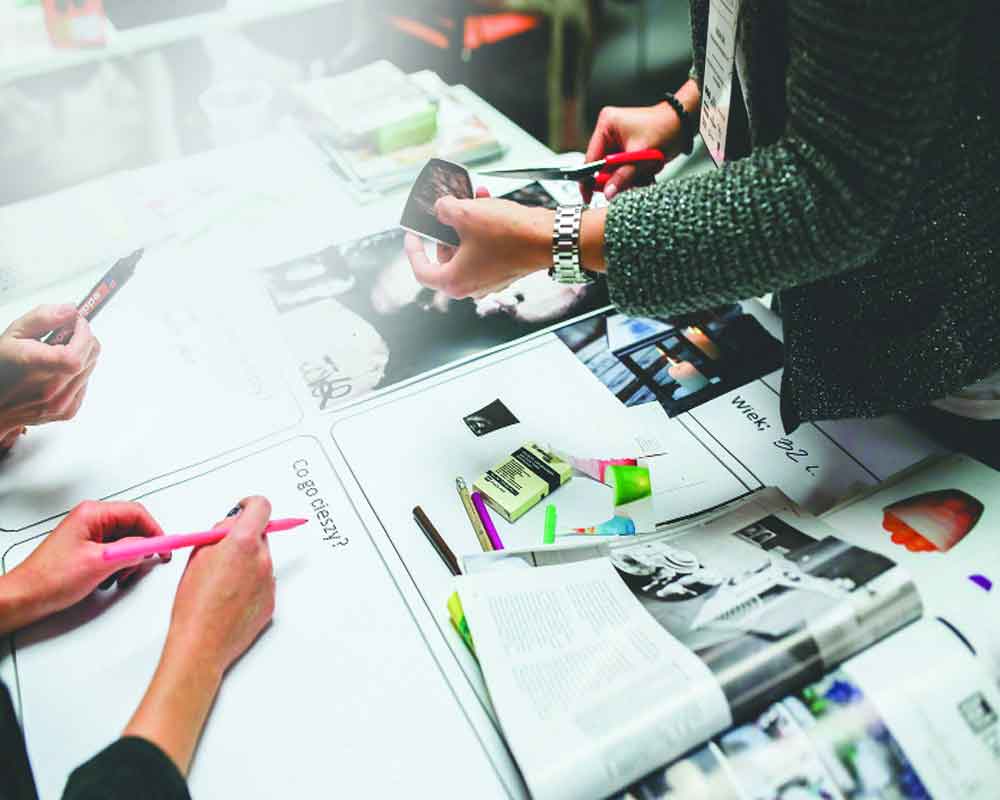Considering how closely design impacts and, in turn, is impacted by its surrounding environment and the socio-cultural landscape, it is not surprising that the COVID-19 pandemic greatly affected the way we perceive, teach and implement design in our day to day lives, says Dr Jitin Chadha
Design is a discipline that is fundamentally practiced and process-based. It cannot be taught and learnt within the confines of a classroom or limited to the pages of a textbook. Essentially experimental and exploratory in nature, it needs a hands-on approach along with ample curiosity, critical thinking and the constant willingness to learn, unlearn and relearn with changing times and circumstances. When it comes to design education, what is often imperative is an integrated pedagogical approach to learning, one that mirrors the working of the real world.
Needless to say, it is vital that students are not taught in silos by compartmentalising skills, concepts and knowledge which later need to be merged and applied to real life situations. Considering how closely design impacts and, in turn, is impacted by its surrounding environment and the socio-cultural landscape, it is not surprising that the COVID-19 pandemic greatly affected the way we perceive, teach and implement design in our day to day lives.
The pandemic that gripped the world forced us to rethink the ways in which we define education. It required a reworking of traditional concepts and age-old methodologies of imparting knowledge. Despite the undoubted catastrophe that ensued, there has been a silver lining that we may have perhaps overlooked. The uprooting of educational notions that were set in stone, provided the discipline of design with a fertile terrain to flourish.
On the surface, the challenges were numerous as teaching and learning methods that we had long been accustomed to had to be adapted to the present times. However, underneath the many hurdles, what also came to the fore was various and varied ways in which we can learn to make the best of the situation we had been presented with. Virtual classes meant that students and teachers were now able to interact from anywhere across the globe. Geographical boundaries were no longer a factor. It also ushered in a new sense of flexibility and fluidity. Classrooms were no longer defined to a fixed physical location. Instead it meant that teaching and learning could take place anywhere and at any given time. Online teaching paved the way for a model of education where both students and teachers broke out of predefined roles and took initiatives to experiment, explore and engage with one another. This invariably provided the space for the growth of an entrepreneurial mindset and a problem-solving and practical outlook to life in general.
Blended learning and hybrid education has become the new way ahead. This could not provide for a better platform for ushering changes within the field of design education. The advancements in technology, the varied online tools and software and the newfound approach to education has enabled the discipline of design to thrive. Today the focus is largely on experimenting, problem solving and creating for a sustainable, ethical and technology driven world — principles that have always governed the field of design.
The pandemic meant that students were exposed to an education of a unique kind, one that cajole them to think beyond what they had been familiar with up until now in order to design solutions for the new kinds of problems and challenges that the current world presented them with.
Design has, since the beginning of time, offered diverse avenues to alter and better understand the way in which we perceive not only education but the very world we inhabit. It provides an opportunity for a learning environment that encourages students to find answers through logical thinking, practical reasoning and asking the right questions. This enabled a complete paradigm shift that has allowed for what can be called a technological breakthrough across various fields. This evolution of the virtual space has monumentally complemented the development and growth of design education.
While there is still a long way to go and a great deal to achieve, the COVID-19 pandemic has equipped the youth of today with the skills and aptitude they require to tackle any challenges that future times may throw their way. These blended and hybrid models of teaching and learning, this technological boom and this newfound focus on experimentation bodes well for the coming times for it promises a new generation of designers that are not only self-aware, ethical, curious and analytical in their approach but also at the same time unafraid to take risks, to persevere and to create novel solutions for a better and brighter tomorrow.
The wrier is Director of Indian Institute of Art and Design(IIAD)


























